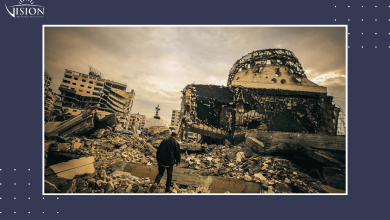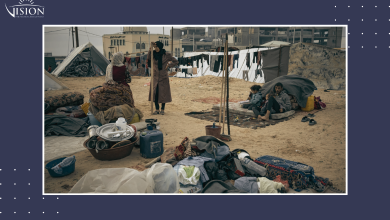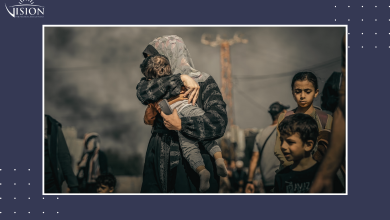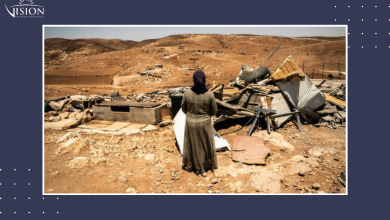A Study on Governance Options and Future Scenarios for the Gaza Strip
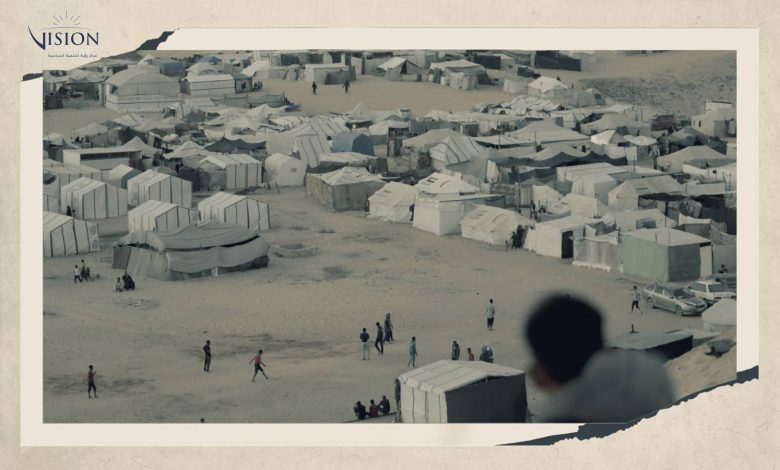
Yasser Mana’a
At the height of discussions about the impending exchange deal between “Israel” and Hamas, the issue of the “day after” emerges as a pivotal matter that occupies the attention of regional and international parties. This issue revolves around critical questions regarding who will take over the administration of the Gaza Strip and how it will be managed. It appears that the matter of managing Gaza after the war is not merely an internal Palestinian affair but a dilemma with broad political, security, and humanitarian dimensions that affect the future of Palestinians and the nature of regional and international interactions. Amid the U.S.-Israeli consensus on the necessity of ending Hamas’ rule in the sector, the visions and proposed initiatives regarding possible alternatives vary, making this issue a fundamental focus in shaping the contours of the upcoming phase.
In this context, the Israel Policy Forum released a policy paper highlighting the “day after” the end of the war in the Gaza Strip, prepared by Ibrahim Eid Dalalsha and Shira Efron. The paper focuses on the issue of managing the sector as a multifaceted and pivotal element, emphasizing the international consensus on ending Hamas’ control and discussing the proposed scenarios and plans from the active parties. It also addresses the challenges that may face the transfer of authority in Gaza, the mechanisms for reconstruction, and the establishment of sustainable governance that ensures long-term stability. Among the topics addressed in the paper are the Egyptian vision of creating a community support committee to manage transitional governance and the Emirati plan advocating for placing Gaza under temporary international control.
About the Israel Policy Forum
The Israel Policy Forum is a U.S.-based organization and research center founded in 1993 with the aim of promoting a two-state solution as a means to end the Israeli-Palestinian conflict. The center’s work is based on the priority of ensuring “Israel’s security” and its continuation as a “Jewish and democratic” state, while fulfilling the Palestinians’ aspirations to establish their state. The center focuses on preparing policy papers and research analyses targeting American and Israeli decision-makers, in addition to organizing events and educational programs aimed at educating the public about the importance of reaching a comprehensive political settlement. It also aspires to enhance the role of the United States in reviving peace negotiations and directing efforts toward sustainable solutions to the conflict.
This paper reviews the main points presented in a policy paper issued by the Israel Policy Forum, which addressed various scenarios for managing the Gaza Strip after the war by examining some international and regional perceptions regarding the fate of Gaza’s administration in the post-war phase. These perceptions largely focus on the necessity of removing Hamas from power and the desire to restore the Palestinian Authority, within certain frameworks, to govern the sector. However, there are differences regarding the mechanisms and objectives in the plans and visions proposed by Egypt, the UAE, the United States, and the Palestinian Authority. Although the paper focuses only on the perceptions of these entities, there are other perceptions that emerged during the war from other parties that the paper did not address, and it also did not cover the Israeli stance on these perceptions.
The Egyptian Plan
Egypt has presented a plan aimed at establishing a Community Support Committee in Gaza, responsible for a transitional governance system based on local expertise, while minimizing international intervention to the bare minimum. The plan proposes forming a committee of 10 to 15 specialists agreed upon by the various political factions, ensuring that this committee operates in accordance with the Palestinian Authority’s laws and is subject to the supervision of a national body to guarantee the unity of Palestinian territories and prevent the separation of Gaza from the West Bank.
Regarding security and order, no detailed security plan has been presented; however, it is assumed that the committee will operate under the directives of the Palestinian Authority. In the field of reconstruction, the plan suggests managing this process through the committee in coordination with regional organizations and establishing a new fund managed by international donors. Additionally, the plan includes cooperation between the committee and international and Arab entities to support reconstruction efforts and ensure the continuity of work.
It is noteworthy that Hamas expressed its approval of this plan in an official statement issued after talks with Egyptian officials and members of the Fatah movement in Cairo during December. However, the position of the Fatah movement and the Palestinian Authority remains under review, as reports indicate significant reservations about the content of the plan.
The Emirati Plan
The United Arab Emirates (UAE) has proposed a plan focusing on placing Gaza under temporary international control immediately after the end of the war, with the responsibility gradually being transferred to the Palestinian Authority in the long term, provided that substantial reforms are achieved within the Palestinian Authority, including the appointment of a new Prime Minister.
The plan aims to achieve stability in Gaza and return it to the control of the Palestinian Authority within a broader vision that seeks to advance the two-state solution process, enhance reforms within the Palestinian Authority, and activate its role, as advocated by the American administration. The plan also proposes the establishment of a Temporary International Mission (TIM) composed of representatives from Arab and Western countries, in cooperation with the Palestinian Authority, to assume security and law enforcement responsibilities in the initial phase, with these responsibilities being gradually transferred to the Palestinian Authority.
Regarding reconstruction, international donors will lead these efforts, focusing on developing infrastructure and rebuilding the Palestinian Authority’s institutions in Gaza. The implementation of the plan will be coordinated with Israel through the United States, the UAE, and other regional partners.
The American Plan
The United States proposes a plan based on a hybrid international supervision, aiming for a gradual transfer of control to the Palestinian Authority, with a focus on building sustainable governance capacities and comprehensive political reforms.
The plan includes implementing reforms within the Palestinian Authority to enable it to achieve long-term governance in Gaza and manage a transitional phase through an executive council comprising Palestinian representatives and international partners. In the area of security, new security forces under the Palestinian Authority will be trained, and a multinational force will be temporarily deployed to secure the borders and provide humanitarian assistance.
Regarding reconstruction, an international fund will be established to channel aid through the Palestinian Authority, emphasizing transparency and accountability in managing funds and decision-making. The United Nations will lead efforts to provide humanitarian assistance, while the United States and Gulf countries will contribute political and financial support to achieve the plan’s objectives. This proposal largely aligns with the American vision in many of its aspects.
The Palestinian Authority Plan
The Palestinian Authority seeks to enhance the independence of the Palestinian people, unify national institutions under its leadership, and work towards achieving a two-state solution. Its plan focuses on achieving a permanent ceasefire, providing urgent humanitarian assistance, and reaching a comprehensive political settlement based on United Nations General Assembly Resolution 67/19, adopted in 2012, which granted Palestine non-member observer state status in the United Nations General Assembly.
In the realm of governance, the West Bank and Gaza Strip will be unified under the Palestinian Authority according to the principle of “one law, one authority, and one security force.” The plan also includes reorganizing the Palestinian Authority government to ensure order and control over all Palestinian territories.
In terms of security, Palestinian security forces will operate under unified leadership to ensure stability and security control. The Palestinian Authority, with support from international donors, will undertake the construction of infrastructure and the enhancement of economic development, focusing on achieving independence from Israeli control by renegotiating existing trade agreements. The plan also seeks to convene an international peace conference to achieve a two-state solution with the participation of Arab and international parties.
Agreements, Differences, and Challenges Facing the Proposed Plans
The paper presents a number of issues and challenges that require examination to analyze and assess the feasibility of implementing these visions on the ground. In this context, it can be said that the previous perceptions agree on some fundamental issues and differ to varying degrees on certain matters and practical procedures. Among the most significant of these agreements and challenges are:
- Exclusion of Hamas from Any Future Role
Most of the plans presented by regional and international entities share a clear rejection of any future role for Hamas in the administration of the Gaza Strip. However, the Egyptian position may be less stringent compared to what is evident in official documents, as discussions about forming an accreditation committee indicate the possibility of granting Hamas a specific role.
Naturally, many regional and international actors treat Hamas as an illegitimate party in governance, in addition to classifying it as a “terrorist” organization by most Western countries. Meanwhile, some Arab states view Hamas with suspicion, stemming from the organization’s adoption of armed struggle and its regional affiliations, especially with the “Axis of Resistance,” as well as its ideological backgrounds. These factors drive the international and regional efforts to exclude Hamas from governance within any sustainable political arrangement in Gaza. On the other hand, many regional players believe that its existence poses obstacles to normalization projects and regional “peace,” aligning with the American-Israeli vision. However, the issue of displacing Hamas from the Palestinian political scene does not appear to be easily achievable, given its ability to continue confrontation throughout the war, its significant political popularity, and other factors.
- Conflict Between International/Regional Plans and Israeli Positions
International and regional plans to find an alternative to Hamas governance in Gaza conflict with Israeli positions that categorically reject any official role for the Palestinian Authority in the sector, as explicitly stated by Israeli Prime Minister Benjamin Netanyahu. Beyond the arguments raised by the Israeli government to oppose the return of the Authority to the sector, the oppressive behavior adopted by Israel in the Gaza Strip indicates that the overall Israeli perception aims to dismantle Palestinian society and expel its population, making any role for the Palestinian Authority unnecessary from an Israeli perspective.
On the other hand, the failure to achieve the immediate expulsion goal, coupled with the return of the Palestinian Authority to the sector, causes the occupying state to fear strengthening the Authority’s role and enhancing its international standing. This could be exploited to push pressure towards achieving a two-state solution or restoring the peace process, an option that the current Israeli government vehemently rejects. Therefore, Israel seeks to maintain the status quo, which ensures its control over borders and crossings and, consequently, complete control over economic and security activities within Gaza. This reinforces its strategy aimed at undermining any efforts to empower Palestinians to establish an independent and sovereign entity.
On the other hand, the failure to achieve the immediate expulsion goal, coupled with the return of the Palestinian Authority to the sector, causes the occupying state to fear strengthening the Authority’s role and enhancing its international standing. This could be exploited to push pressure towards achieving a two-state solution or restoring the peace process, an option that the current Israeli government vehemently rejects. Therefore, Israel seeks to maintain the status quo, which ensures its control over borders and crossings and, consequently, complete control over economic and security activities within Gaza. This reinforces its strategy aimed at undermining any efforts to empower Palestinians to establish an independent and sovereign entity.
- Challenges in Coordination Among International and Regional Actors
The proposed plans reveal fundamental contradictions between the interests and political visions of the involved countries. For example, the Egyptian plan reflects an approach that relies on enhancing local governance with minimal international intervention, while the UAE and the United States prefer direct international supervision, involving regional and international forces in managing security and reconstruction. This disparity indicates the potential difficulties in achieving international consensus on the appropriate mechanism for managing Gaza, especially considering that it is impossible to exclude Egypt from any future arrangement regarding the sector’s fate, as it is the most influential and affected Arab regional party in Gaza’s affairs.
Additionally, disagreements among active Arab countries, such as Egypt and the UAE, regarding political and security roles in Gaza may further complicate the landscape. Moreover, relations between Israel and these countries will remain a crucial factor in determining the effectiveness of implementing these plans and the extent of Israeli responsiveness to these proposals, especially if accompanied by efforts to find a new political pathway.
- Agreements and Challenges in the Plans
All plans, despite differing in details, emphasize that the solution in Gaza must be part of a comprehensive or temporary political settlement that ensures stability and sustainability. However, there are clear attempts to minimize the Palestinian role in formulating these solutions, including efforts to ignore the necessity of unifying Palestinian territories under a participatory consensus leadership that includes all factions.
Achieving this vision requires enhancing security and rebuilding the economy, along with providing a leadership framework that reflects Palestinian political plurality. Nevertheless, the implementation of this ambition remains tied to overcoming internal divisions among Palestinian factions, as well as the need to ensure continuous and strong international support to realistically and sustainably achieve these goals.
- Implementation Obstacles on the Ground
Any future plan to change governance in Gaza faces significant on-the-ground challenges. Among these challenges is the Palestinian Authority’s ability to reassert control over the sector. This requires rebuilding institutions, restoring security, dealing with destroyed infrastructure, and reaching understandings with resistance factions, as they remain active and capable on the ground and can influence Gaza’s reality. Additionally, international forces or supervisory missions may encounter local resistance, whether from pro-Hamas forces or from sector residents who might view these interventions as a form of new occupation.
Consequently, the Palestinian Authority’s plan faces fundamental obstacles, notably its weak influence in Gaza and its decline in the West Bank, in addition to internal divisions among Palestinian factions that make the Authority’s task nearly impossible without coordination with resistance factions, potentially leading to internal clashes. Furthermore, the Authority lacks the ability to mobilize sufficient resources for reconstruction and institution building, making the implementation of its vision extremely difficult. It also does not possess any leverage to pressure the occupation into accepting its return to Gaza or agreeing to any political pathway. Therefore, the success of this plan requires strong and continuous international and regional support, which remains highly uncertain given the current situation.
- Potential Negative Impact on Civilian Populations
The paper indicates that all proposed plans focus on political and security dimensions, particularly those related to the occupying state and its considerations, with a clear absence of direct strategies to address the acute humanitarian crisis in Gaza. This poses a danger to the civilian population, who suffer from poverty, unemployment, and a lack of basic services. The success of any future plan requires placing the needs of the population at the forefront of priorities.
The Absent Present Israeli Vision
Although the paper reviewed the proposed regional and international visions, it neglected the Israeli perception known as the “Day After” scenario in the sector. Despite the absence of an officially declared Israeli plan, the practices and policies adopted by the occupying state provide clear indications of its vision for the future of the Gaza Strip. This vision is manifested in several key points, most notably the rejection of any official role for the Palestinian Authority in the sector, as well as causing maximum destruction to infrastructure, service, and health facilities, and the overall political, social, and economic fabric of society; aiming to make the Gaza Strip an uninhabitable area, thereby making its reconstruction more difficult amid the ongoing war of extermination.
Israel seeks to consolidate its control by imposing buffer zones within the sector extending for several square kilometers along the length of the sector, maintaining control over vital areas within the sector, and additionally issuing internal calls for resettlement in Gaza. This step reflects intentions to impose a new reality that contradicts the presented proposals.
American policies towards Gaza reflect a clear inconsistency, as they often align with the Israeli vision, exhibiting a contradiction between declared rhetoric and actual policies. For example, the United States has supported initiatives such as the “Humanitarian Bubbles Plan,” which aims to divide Gaza into separate zones, thereby deepening its isolation without addressing the fundamental issues or providing comprehensive solutions. These plans contradict American statements advocating for stability, revealing a duplicity in positions that serve Israeli interests.
It is likely that American bias towards Israeli perceptions will be reinforced during the era of President Donald Trump, who adopts policies more in line with the Israeli agenda. With his return and the continued influence of his policies towards the region and the Palestinian cause, projects aiming to impose new realities on the ground according to the Israeli vision and desires may be completed.
References
- Post-War Governance in Gaza: Comparison of Four Plans
- Ibrahim Dallaisha is the Executive Director of the Horizon Center for Political Studies and Media Communication.
- Shira Efron is the Senior Policy Researcher at the Diane and J. Walter Gelzer Foundation, and an analyst at the Israeli Policy Forum in New York.
- For more information, see the link: About the Israel Policy Forum


